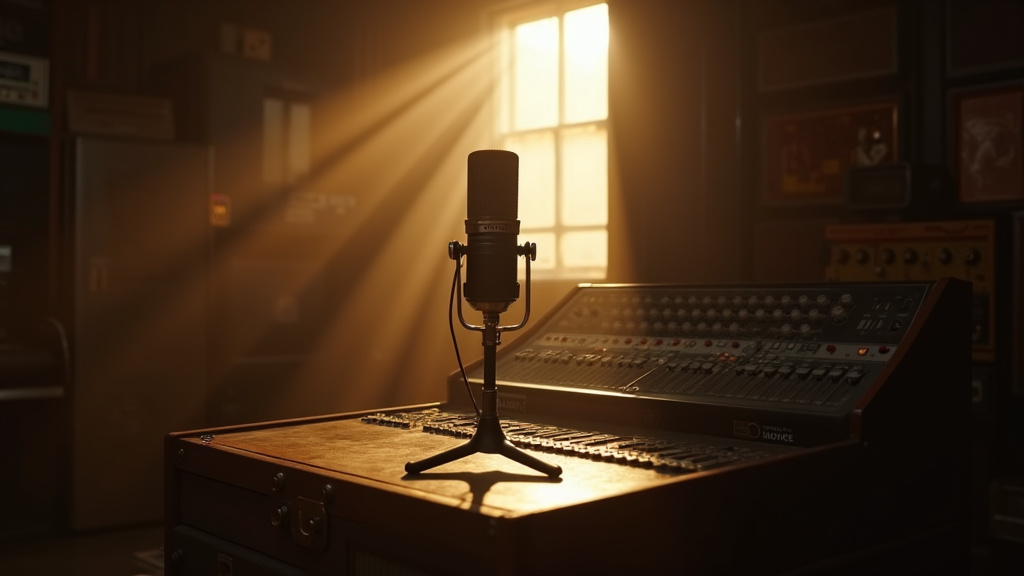StreamSound Announces Sweeping Royalty Model Change Amidst Industry Backlash
StreamSound, one of the world’s largest music streaming platforms boasting a user base exceeding 500 million active listeners, today unveiled a significant and immediately controversial restructuring of its royalty payment framework. The drastic overhaul, slated to take effect on June 1, 2025, introduces a mandatory minimum stream threshold that tracks must surpass before any royalties begin to accrue for the rights holders.
Platform executives assert the move is primarily aimed at combating widespread streaming fraud and increasing the efficiency of royalty distribution towards tracks that genuinely engage listeners. However, the announcement has ignited fierce criticism, particularly from independent musicians and advocacy groups, who argue the new system will disproportionately harm emerging and niche artists.
The Core of the New Model: Minimum Stream Threshold
Under the existing model, even a single stream, however minuscule the payout, contributed to an artist’s or rights holder’s earnings. The new structure fundamentally alters this by implementing a per-track minimum stream count. While StreamSound has yet to disclose the precise number of streams required for a track to become eligible for payment under the new policy, sources familiar with the company’s internal discussions suggest it could be in the low to mid-hundreds.
StreamSound’s official statement detailed the rationale behind this change, emphasizing the need to redirect payments away from what they term ‘non-meaningful streams’ or those generated by automated bots or fraudulent activity. They contend that the administrative cost and complexity of processing micro-payouts for tracks with extremely low legitimate stream counts also contribute to inefficiencies within the system.
Justification from StreamSound Leadership
Speaking at a press conference following the announcement, StreamSound CEO Jane Doe defended the controversial shift, citing internal data that painted a stark picture of the current distribution landscape. Doe stated, “Our analysis shows that less than 5% of tracks on the platform currently generate over 95% of all royalties paid out. The vast majority of uploaded music receives very few streams, and a significant portion of those minimal streams are linked to fraudulent activities.”
Doe argued that by setting a threshold, StreamSound could reallocate funds that would have previously been distributed across millions of barely-streamed tracks (many potentially fraudulent) towards the tracks and artists that are genuinely attracting and retaining listeners. She positioned the change as a necessary step to ensure the platform’s economic model remains sustainable and fair to artists generating significant engagement.
Strong Opposition from Independent Music Community
The reaction from organizations representing independent artists was swift and unequivocally negative. The Independent Music Union (IMU), a prominent advocacy group representing over 10,000 artists, issued a scathing condemnation of StreamSound’s new policy.
In a public statement, the IMU argued that the minimum stream threshold effectively ‘defunds’ independent and emerging musicians who rely on income from early streams to help build their careers. They contend that while the top tier of artists may see little change, or even a marginal increase in per-stream rates due to the reallocation of funds, the countless artists struggling to gain traction will now earn nothing from their initial listenership on StreamSound.
“This move clearly favors established labels and artists who already command massive audiences and stream counts,” the IMU statement read. “It punishes experimentation, niche genres, and artists who are just starting out. It fundamentally undermines the promise of streaming as a platform that could democratize music distribution and income.”
Critics also expressed concern that the focus on combating fraud, while a legitimate goal, places the burden unfairly on legitimate emerging artists. They suggested that StreamSound should invest more heavily in anti-fraud technology rather than penalizing artists for low stream counts, which can be a natural part of the development process.
Potential Industry Ramifications and Analyst Predictions
The announcement has sent ripples through the music industry. Analysts are predicting potential negative consequences for StreamSound.
Industry observers anticipate significant backlash from the artist community, potentially leading to public campaigns and protests. More critically, there is a strong possibility of artist migration to competing platforms that may offer more favorable terms for emerging creators.
Platforms such as AudioBurst and Melodia are already being discussed online by independent artists as potential alternatives. While these platforms may not currently boast StreamSound’s massive user base, a significant exodus of diverse, independent talent could erode StreamSound’s catalog breadth and cultural relevance over time.
Analysts note that the success of this policy shift will depend heavily on the specific threshold implemented and StreamSound’s ability to mitigate the negative PR and artist relations fallout. The coming months are expected to be crucial in determining the long-term impact of this contentious change on StreamSound and the wider digital music ecosystem.





